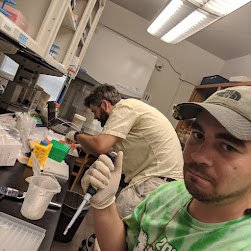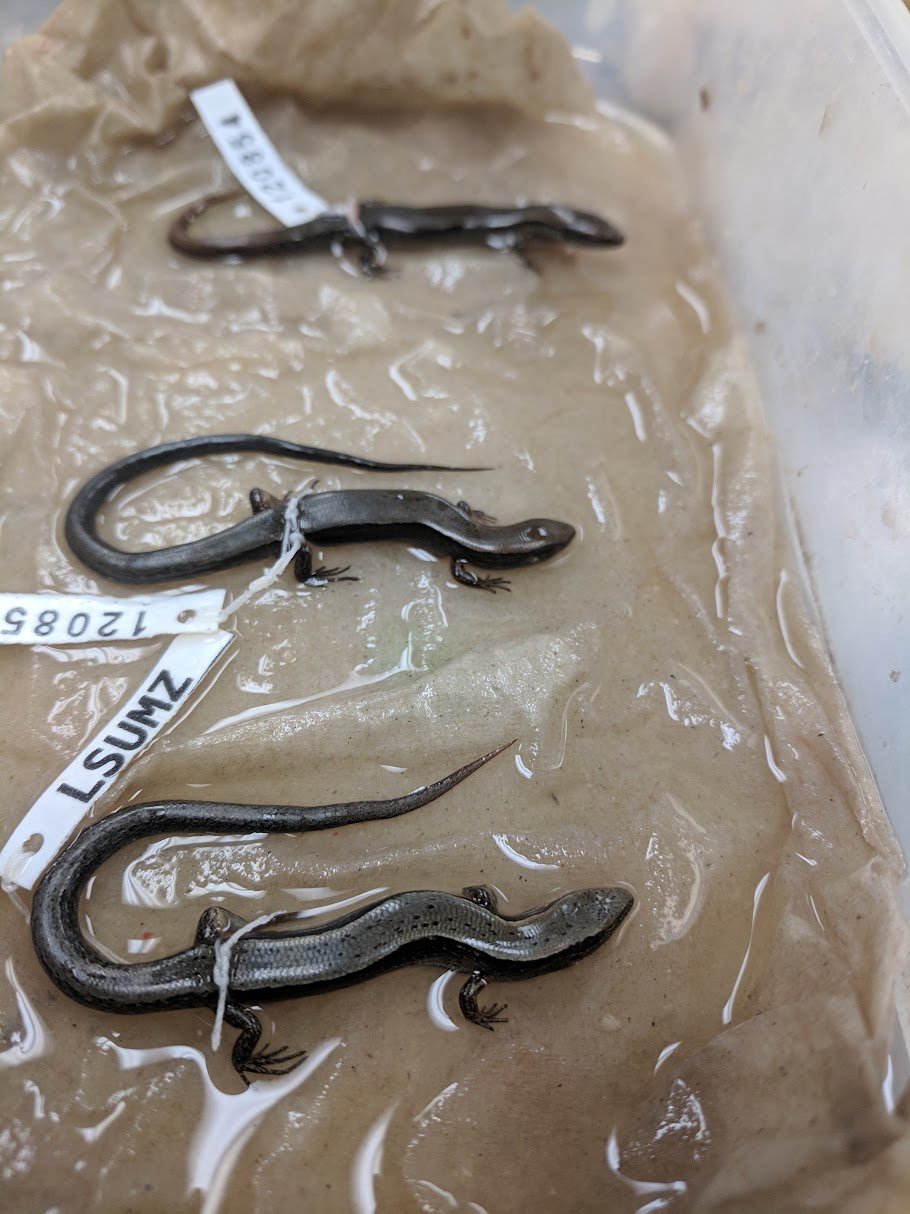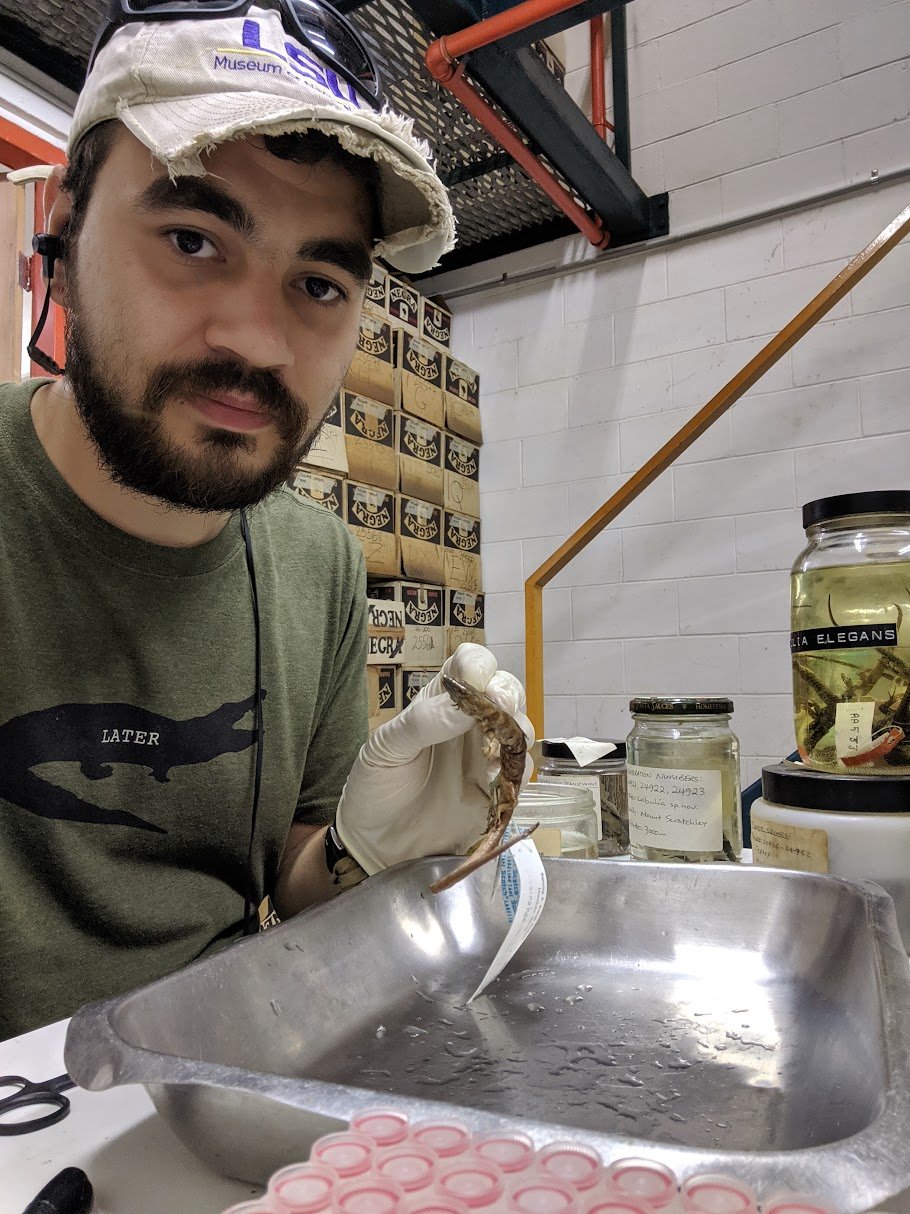Evolutionary Biology Research
Found this Hypsilurus in a highland village in Papua New Guinea.
General
I have broad interests in the natural history of reptiles and amphibians , phylogenetics , and genomics . For my dissertation research, I investigated the phylogenetic and genomic history of complex traits in lizards, particularly in Australasian skinks. Because they are characterized by a broad array of phenotypes, ecological morphologies, and adaptations, scincid lizards can provide unique insights to vertebrate adaptations. I ultimately want to shed light on how genome evolution drives and maintains the biological diversity we see today.
Publications
Rodriguez, Z. B., Perkins, S. L., & Austin, C. C. (2018). Multiple origins of green blood in New Guinea lizards. Science Advances, 4(5), eaao5017. https://www.science.org/doi/full/10.1126/sciadv.aao5017
Broussard, E. M., Rodriguez, Z. B., & Austin, C. C. (2022). Evolution of the albumin protein family in reptiles. Molecular Phylogenetics and Evolution, 169, 107435. https://doi.org/10.1016/j.ympev.2022.107435
Defensive display of a female Prasinahaema prehensicauda. The green coloration can be seen in the blood, muscles, bones and mucosal lining. Look at her mouth and tongue! Photo Credit: Christopher Austin.
Green Blood
The focal species of my dissertation are Prasinohaema, a genus of New Guinea lizards that have bright green blood. The green coloration is caused by buildup of the bile pigment biliverdin in the bloodstream. However, green blood is a risky trait to have: bile pigments are toxic and in humans, this causes green jaundice often seen in newborns and people with malfunctioning livers. In other vertebrates, bile pigments like biliverdin are rapidly removed from the body and are generally undetectable in the blood. However, these lizards keep it at extremely high concentrations in their bodies and have somehow evolved a resistance to biliverdin accumulation. This unusual trait offers a promising system to investigate the genomic changes that shape physiological modifications, and how this variation ultimately contributes to species diversity.
Lizard Phylogenomics
To accurately trace the evolutionary history of unique or unusual traits, we first need a well-supported phylogeny. Thus, a major component of my dissertation involves estimating the species relationships among Australasian scincid lizards. To accomplish this, I have inferred a species level phylogeny for >50 species of Australasian skinks using thousands of Ultraconserved elements. We used so many loci because previous studies that included just a few New Guinea species resulted in short internal branches with low support. Our goal was to improve resolution by sampling loci across the genome. This was done using a targeted sequence capture approach in combination with next generation sequencing. While my first project focuses on estimating a species tree for Prasinohaema lizards and many closely related species, I have a few other projects looking at other groups of Australasian skinks: Stay tuned!
Projects:
Rodriguez, Z. B., Perkins, S. L., & Austin, C. C. (2018). Multiple origins of green blood in New Guinea lizards. Science Advances, 4(5), eaao5017. https://www.science.org/doi/10.1126/sciadv.aao5017
Prasinohaema semoni, a green blooded lizard from the lowlands of Papua New Guinea. Note this lizard is not green in outward coloration even though its blood, bones, and muscles are lime-green colored. Photo: Christopher Austin
In this image, one tube (top) shows a blood sample from a regular red-blooded lizard from New Guinea (Lamprolepis smaragdina). The other tube (bottom) reveals the bright green blood of Prasinohaema. The bile pigments in this blood is toxic to other species, but Prasinohaema handles it just fine. Credit: Chris Austin, LSU.
Comparative Genomics
I am also working on a comparative genomics project to identify genomic and proteomic changes associated with biliverdin retention and tolerance. To accomplish this, I am querying the transcriptomes of two Prasinohaema species and two closely-related red blooded species. This pilot project will serve as a proof of concept to determine if we can leverage a set of expressed genes (RNA) in a non model organism and identify changes in genes that may be involved in green blood. Generating functional genomic resources for these lizards is an exciting outcome of this project because research on skinks (and Squamates in general) suffers from a dearth of genomic resources. Understanding the underlying genomic and proteomic changes that have allowed these lizards to remain jaundice-free may translate to non-traditional approaches to specific health problems.
Genomic Labwork
I am extremely proficient at molecular lab work. I was originally trained in molecular techniques in while in Dr. Kenneth Wallace's Lab at Clarkson University and again in Dr. Todd Castoe's Lab at the University of Texas at Arlington. These skills translated well into my graduate school career, where I have extracted both DNA and mRNA from hundreds of reptile and amphibian samples. I have performed all of my own Library Preps in-house for next-generation sequencing (Sequence Capture, whole-genome sequencing, and transcriptome sequencing). While most of my work is computational, I will always have a passion for lab work.








